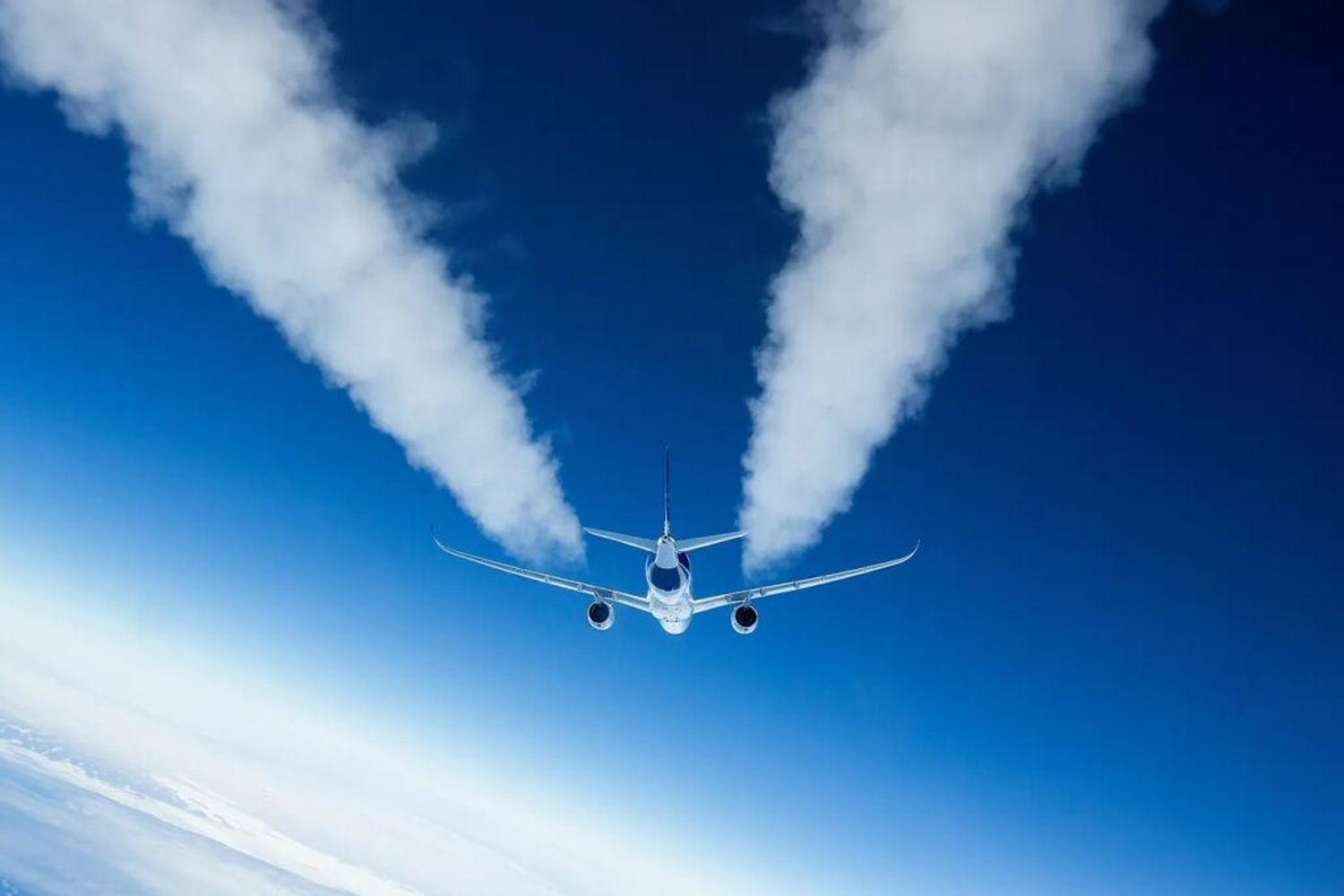Airbus Analyzes the Impact of Contrails on Climate Change
Airbus is leading a project to improve weather predictions and assess the impact of alternative fuels, aiming to reduce aviation's climate footprint.
In a March 7, 2025 report, Airbus explained how aircraft contrails contribute to climate change.
Aviation emissions go beyond just carbon dioxide (CO₂), prompting Airbus and the broader industry to take a proactive approach in addressing non-CO₂ emissions.
How Contrails Form and Their Climate Impact
The combustion of jet fuel produces CO₂ and other substances, including:
- Water vapor
- Nitrogen oxides (NOx)
- Sulfur oxides
- Carbon monoxide
- Soot
- Unburned hydrocarbons
- Aerosols
Under certain atmospheric conditions, water vapor and some of these compounds freeze, forming contrails—trails of ice crystals that reflect sunlight but also trap heat in the atmosphere, leading to a net warming effect.
While scientific uncertainties remain, climate models agree that contrails significantly impact global warming.
- Contrails can stretch up to 150 kilometers (93 miles), lasting anywhere from minutes to hours.
- Only about 10% of flights, mostly long-haul, generate 80% of contrails with a warming effect.
Mitigation Strategies
Efforts to reduce contrail impact focus on:
✔ Better Atmospheric Forecasting – Predicting conditions where contrails form and persist could allow aircraft to adjust routes, avoiding high-impact contrail formation.
✔ Optimized Flight Planning – Adjusting flight paths could help, but deviations may increase fuel consumption and CO₂ emissions, making it a complex trade-off.
✔ Sustainable Aviation Fuels (SAFs) – Research is underway to understand how alternative fuels affect contrail size and ice crystal formation.
Airbus and the CICONIA Project
Airbus leads CICONIA, an EU-funded project under SESAR, aimed at improving meteorological forecasting and optimizing flight planning to reduce contrail impact.
The company is also involved in studies on alternative fuels, exploring their role in lowering both CO₂ and non-CO₂ emissions.


Comentarios
Para comentar, debés estar registrado
Por favor, iniciá sesión